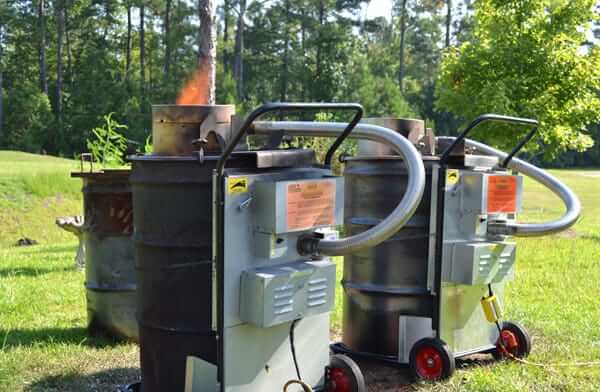
Double-Duty Drug Fighter for Community Prescription Take-Back Programs and the Destruction of Confiscated Drugs.
The safe and controlled destruction of confiscated drugs by law enforcement agencies is mandated by the Uniform Controlled Substances Act and is enforced by the United States Drug Enforcement Administration (US DEA). Federal and state hazardous waste rules and regulations, enforced by the United States Environmental Protection Agency (US EPA), must also be followed when disposing of impounded drugs.
But who controls and enforces the disposal of medications from the household medicine cabinet and why should law enforcement agencies be concerned?
According to the Department of Justice’s 2009 National Prescription Drug Threat Assessment and the Office of National Drug Control Policy’s 2008 Report:
- The number of deaths and treatment admissions for Controlled Prescription Drugs (CPDs) has increased significantly in recent years, especially among teens.
- One-third of all new abusers of CPDs are 12 to 17-year olds.
- Teens abuse CPDs more than any other illicit drug except marijuana—more than cocaine, heroin, and methamphetamine combined.
- CPDs are often found in the home.
- Violent and property crime associated with CPDs has increased dramatically in the United States over the past 5 years.
Pharming Parties
Storing unused or outdated medications in the home is a prescription for danger. One in five teens pop pills to get high and almost half admit that they pilfer the medications from friends’ and relatives’ medicine cabinets. Some teens even participate in clandestine gatherings, called “pharming parties,” where pain-killers, anti-anxiety medicine, stimulants, antidepressants, and even blood pressure medicine are mixed for a cheap and potentially lethal high.
Ecological Aquatic Harm
Not only are stored household drugs inviting unlawful use, there is concern that pharmaceuticals are negatively impacting human and aquatic life through the contamination of waterways. Many household unused and expired medications are flushed down the toilet or sink drain. The Active Pharmaceutical Ingredients (APIs) contained in these medications are difficult to eliminate by municipal wastewater treatment methods and may pose a serious threat to human and marine health.
In a 13-month study in Clark County, Las Vegas, coroners conducted a survey of flushing excess medications down the toilet after someone dies. More than 325,000 medications or about 225 pounds of APIs were swilled into the sewer system. Estimates from this study suggest that left over medications from the deceased population alone may account for as many as 19.7 tons of APIs disposed of into the US sewage systems annually. There is some evidence that the reproductive system of male fish have been altered as a result of drug contamination as well as possibly eliminating some species of aquatic populations. The harmful effects of flushed pharmaceuticals in our water system on humans is still under investigation.
What is the solution? The Drug Terminator.
Manufactured by Elastec/American Marine in Carmi, IL, the Drug Terminator is a portable, cyclonic incineration system originally designed for the destruction of marijuana, cocaine, heroin, opiates, pharmaceuticals, and methamphetamine labs. Easy to use, environmentally safe, and economically priced, the Drug Terminator employs two high velocity electric blowers creating a cyclone of intense heat eliminating illicit drugs quickly and completely. The drug residue is reduced to an average of 1% ash. Non-combustible drug paraphernalia is sterilized by the extreme heat and can be disposed of in municipal landfills.
The Drug Terminator is becoming an important community service tool as well. The Benton County Sheriff’s Office in Bentonville, Arkansas features the mobile incinerator in their Prescription Drug Take-Back program.
Return and Burn
In 2010, Congress passed the “Secure and Responsible Drug Disposal Act” giving communities a safe and responsible way to dispose of unused prescription drugs. The Act seeks to reduce the risk of drug abuse, poisonings, and environmental problems by allowing consumers to give controlled substances to specially designated individuals for disposal, such as law enforcement officials.
Law enforcement agencies with limited budgets are considering using asset forfeiture funds for the purchase of devices such as Elastec/American Marine’s Drug Terminator. According to Sheriff Doug Maier of the White County Illinois Sheriff’s department, “The Drug Terminator is a double-duty drug-fighting tool for law enforcement in that it can be used as an incinerator for the destruction of confiscated drugs as well as a community involvement instrument to keep illicit prescription medications off the street.”
For more information about the ELASTEC Drug Terminator, contact Jeremy Pretzsch, Elastec/American Marine Sales Manager.

